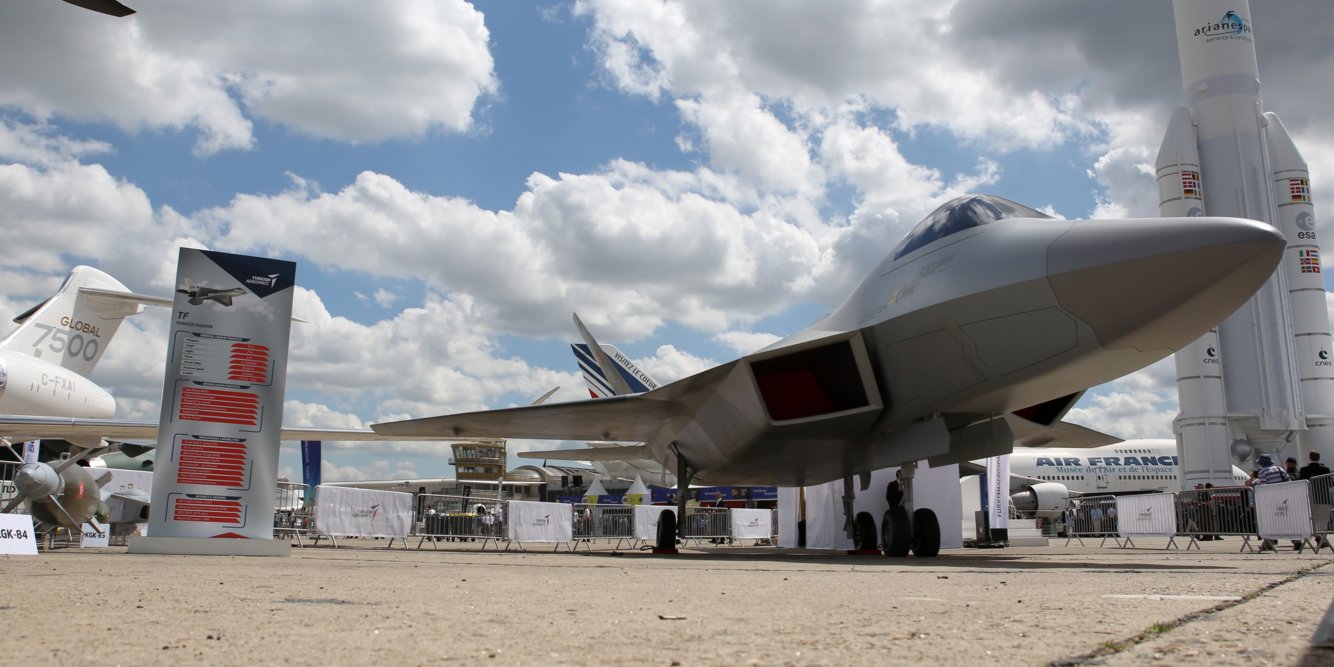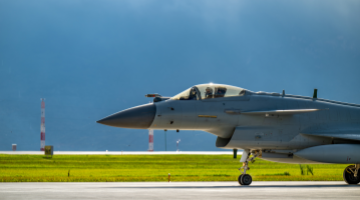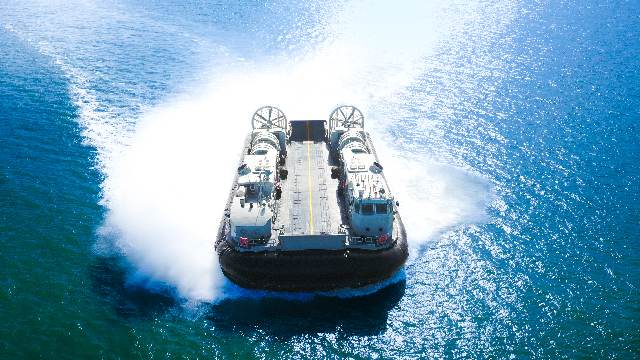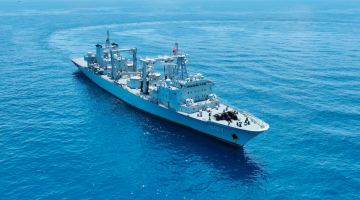
By Wei Wei and Wu Jian
"The ambition to touch the sky!"
"Best quality for the brave!"
"An air force stage without French precision guided munitions doesn't deserve the name."
"For a more advanced, secure and protected world"…
Wandering at Paris Le Bourget Airport, you'd be surrounded by these exhilarating advertisements and aircraft pictures, which were so creative and ingenious that they could make an aviation layman excited with hot blood. That was exactly what the host - France and the European aerospace industry expected to see.
As the oldest and most influential air show in the west, the Paris Air Show that has passed 110 years, facing "profound changes never seen in the past century", is working hard to bridge the splitting sky.
So many exhibitors with even more intentions
The 53rd Paris Air Show kicked off at Le Bourget Airport in the northern suburb of Paris, France on June 17, local time and will run until June 23. As the world's largest air show, the Paris Air Show has been capturing global attention for its concentrated demonstration of the latest aviation technology developments around the world. Altogether 2,462 exhibitors from 48 countries and regions participated in this year's show, and the exhibition space totaled 125,000 square meters.
However, such a large scale and grand style couldn't cover up the divergences and mistrust caused by rising protectionism, which made technology confidentiality a main feature of this year's air show.
French newspaper Les Échosonce published an article titled "Spies Always Gather in Paris", which revealed what the European missile systems provider MBDA experienced at EUROSATORY many years ago. The company's PR representative was astonished to find that someone sampled the tires of one of MBDA’s mine clearing vehicles that was customized for the French military and the mechanical structurewas therefore a national defense secret. It was actually no big deal because, like with all other sensitive equipment, the tires on show were fake both in size and materials.
The pervasion of an "anti-spy atmosphere" among the participants from main technological powers were so obvious. The reporter saw that France's Dassault, Italy's Leonardo and Israel's IAI all confined most of their exhibits in a limited area, and much fewer products were exhibited outdoors compared with two years ago. Visitors often need an appointment and electronic invitation to have an inside look at the exhibition.

Despite such rigorous caution, it was still not surprising to see "technology source" (or "spies", to put it bluntly) at the Paris Air Show 2019. The reporter saw highly professional "observers" everywhere, who, instead of taking pictures of the pretty aircraft and missiles as a whole, always professionally focused their cameras at the exhibits' details like strake wing, cabling strip and exhaust nozzle flaps, either in search for inspirations or flaws.
According to observations, American and European manufacturers, allies in name, were not as close as they claimed due to the transatlantic trade war and even the Brexit. The reporter stood beside Leonardo’s huge billboard, which reads “Airborne fighting”, and noticed that when some visitors with "professional" badges went into Leonardo's exhibition booth, they were received and accompanied by the host all the way. The reporter couldn't hear what they were saying, but it could be telling that their communication was not completely candid as each side was obviously "guarded" based on the hand gestures and expressions. After the "guests" left, they would meet up again somewhere far away from the Italians, and it turned out that they were from American companies.
The Franco-German Axis and the UK Brexit
Being highly capital and technology-intensive, the aviation and aerospace industries are trying hard to avoid "division". Somehow Europe will bear the brunt of this round of division.
The so-called Future Combat Air System (FCAS, or SCAF according to German Defense Ministry) has been the biggest star of Paris Air Show 2019, a joint defense program launched by France and Germany, and commonly known as the "6th Generation Fighter of Europe". FCAS will replace the 4th generation fighters currently in service in Europe as well as the recently commissioned 5th generation.
"We take this great challenge for the future of European combat air systems. This new step is the cornerstone to ensure tomorrow’s European strategic autonomy," said Eric Trappier, Chairman and CEO of Dassault Aviation, the leading developer of FCAS at the air show.
Airbus Defence and Space CEO Dirk Hoke also posted his comment on Twitter that SCAF proceeded well and shared his vision of the future of Defense and welcomed the "clear division of duties and responsibilities", calling it "a major progress on jointly developing Europe's major defense systems and a substantial step in Franco-German cooperation".
In July 2017, Paris and Berlin agreed to develop the 6th generation fighter, which is a system of systems consolidating a large array of interconnected and interoperable elements: a new-generation fighter, unmanned aerial vehicle (UAV), MALE drones, future cruise missile and drone swarms, connected and operable with a vast perimeter of mission aircraft, satellites, NATO systems, as well as land and naval combat systems.
Sebastien Roblin, a reporter with an American magazine The National Interest, said that FCAS project initially made no mention of inviting British participation, likely due to Brexit, and would be a theoretical competitor with the Tempest project, the 6th generation fighter program launched by Britain.
Theoretically, the two systems concepts share a lot in common such as stealth airframes, stronger sensors that facilitate cooperation with friendly forces (including satellite equipment today), extra-long-range air-to-air guided missiles, laser or microwave weapons, ability to control their own unmanned wing planes, and ability of selective manning (the aircraft is able to fly even without a human pilot) and resilience versus cyberattack.
France and Germany have great strengths in aerodynamic configuration and digitalized fly-by-wire flight control systems, but lag behind Britain in engine, the heart of future fighters, while the Tempest is at least guaranteed by Rolls-Royce's adaptive cycle turbofan engine.
Apparently, a divided Europe made both FCAS and Tempest suffer and put other European countries in a loss. It is learnt that the Paris-Berlin clique and London are both trying hard to lobby Spain, Sweden, the Netherlands and Italy, but, according to experts at the air show, only a truly pan-Europe program stands chances of success, although that means the parties will have to clear some major political obstacles.
Roblin cited a statement by Spanish Defense Ministry that neither FCAS nor the Tempest is the best choice, and "an integrated 6th generation fighter program will be more appealing".
From the reporter’s observations, the Franco-German axis and the UK Brexit are inevitable. Jearl-Pierre Maulny, deputy director at The French Institute for International and Strategic Affairs, a think tank, said that apart from the 6th generation fighter, Paris and Berlin would no longer consider the "British involvement" when planning future defense programs for Europe due to the uncertainty of Brexit.
It is known that they have already kicked off the Main Ground Combat System (MGCS), which will be "led by Germany" in return for France's leadership over the 6th generation fighter program. Both French Defense Minister Florence Parly and her German counterpart Ursula von der Leyen have expressed their satisfaction with such an arrangement before the Paris Air Show 2019 in June and asked their teams to share the results.
Russia: No Intention to Be Anyone’s Enemy
France is usually considered the most pro-Russia western country. A good example is the French being persistent about pursuing France-Russia warship deal after the Ukraine crisis of 2014 amid sanctions against Russia. However, the contract was terminated later. Russia, on the other hand, has also kept extolling its long and sincere friendship with France on many occasions.
The Paris Air Show was another opportunity for further engagement. Despite being at the top of the American sanction list, Russia has made its high-profile participation at the Paris Air Show. Russia’s Rostec arrived at Le Bourget, Paris with its key subsidiaries including United Aircraft Corporation (OAK), Sukhoi and Irkut. They not only hired a massive indoor exhibition space, but also arranged their new products like BE-200ES amphibious aircraft and Ansat training helicopter to be displayed outdoors, in an attempt to demonstrate Russian sincerity in cooperating with its European counterparts.
It's worth noting that the Russian exhibitors were not as alert as other western companies. Their exhibits were open to all visitors, and their salespeople are more enthusiastic encountering target clients.
As the reporter noticed, the Russian exhibitors seemed to pay little attention about the host's "awkward situation", and tried hard to sell the Su-57E export type 5th generation fighter jet, for which, with President Putin's approval, was being aggressively promoted in the international market.
Their primary target customer was Turkey, with whom the US threatened to cut off the F-35 fighter supply. Russian website Svobodnaya Pressa reported that the Russian delegation brought a Su-57 documentary made by Russian TV station Zvezda customized for Paris Air Show, for which fifteen HD action cameras, four Su-57 fighters, one Su-30 fighter aircraft and one An-12 transport aircraft were mobilized to make the film aiming to demonstrate the fighter's superiority in stealth, supersonic cruise, maneuverability and information processing.
Having fought on the frontline of Syria, Su-57 was an obvious choice for buyers than the 6th generation fighters, which is still in the development stage. Some informal source indicates that Russia is not only happy to export Su-57E but also willing to cooperate with Europe, particularly with France to boost the external sales of the aircraft.
At present, the foreign arms suppliers that Russia relies on most are all based in France, especially the Thales SA, whose diffraction HUD, "Sigma-95" electronic warfare system, secure communications equipment and thermal imager are fitted on Russian tanks, for exporting to third countries only (such as Su-30 fighter plane exported to India, Vietnam and Indonesia; T-90S tank exported to Algeria).
One thing can be certain that the export of Russia's aviation and ground military products would be in jeopardy without French supply. When the reporter talked with a friend familiar with the Russian-French military trade, who quoted a Russian proverb, “to get to know someone, you have to eat a putt of salt with him", which was equivalent to a well-known Chinese proverb, that is: "As distance tests a horse’s strength, so does time reveal a person’s real character!"
Looking up at the deep blue sunny sky of Le Bourget, one couldn’t be help but wondering, "Why have we been divided, under such a boundless sky?"
Disclaimer: This article is originally published on Xinmin News Net, one of the biggest mainstream news network based in Shanghai City. It is translated from Chinese into English and edited by the China Military Online. The information, ideas or opinions appearing in this article do not reflect the views of eng.chinamil.com.cn.









